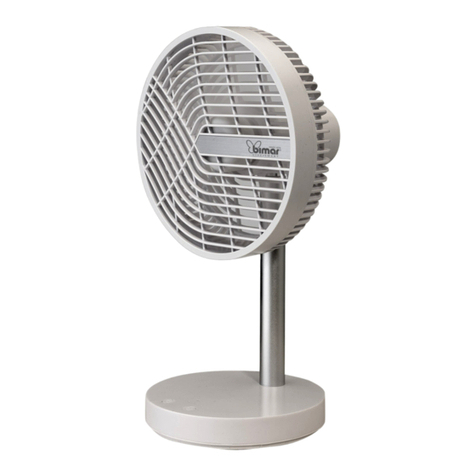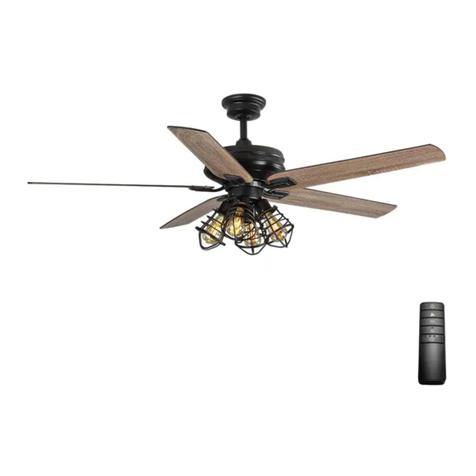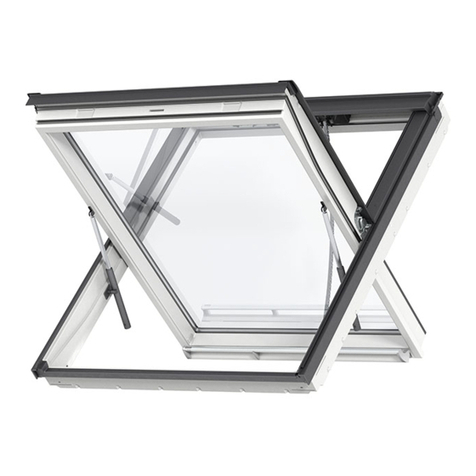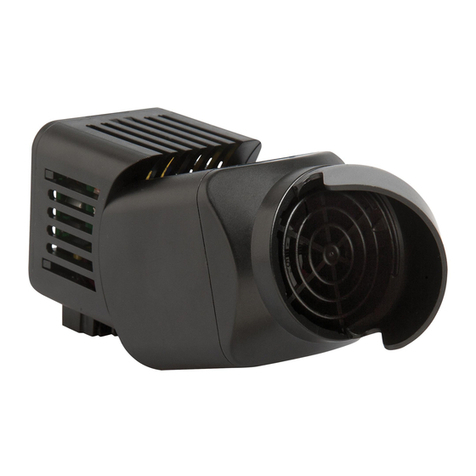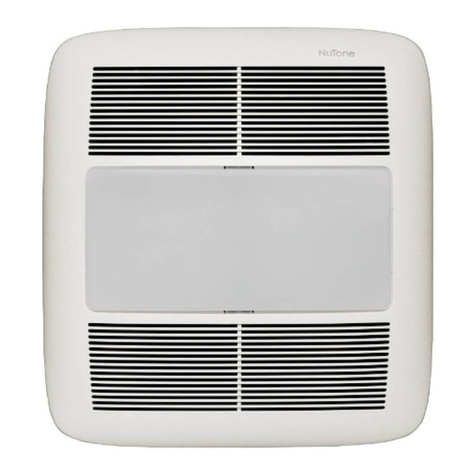AutoMedx SAVe 600x10 User manual

SAVe Ventilator
Simplified Automated Ventilator
Operator’s Manual
Model 600x10
REF
70000


AutoMedx Inc. 1420 Lakeside Parkway Suite 102 Flower Mound, TX 75028
(T) 972.586.7500 (F) 972.408.4177 www.automedx.biz
Simplified Automated Ventilator
Operator’s Manual
Model 600x10
REF
70000
© 2005 –AutoMedx, Inc.
M40032 Rev. H
Revised: 7/15/2013
AutoMedx, Inc.
1420 Lakeside Parkway
Suite 102
Flower Mound, Texas 75028
Phone 972-586-7500
Fax 972-408-4177
www.automedx.biz
Emergo Europe
Molenstraat 15
2513 BH The Hague
The Netherlands
Tel: (31) (0) 70 345-8570
Fax: (31) (0) 70 346-7299
This product is protected by issued and pending US and PCT patents.
Caution: Federal law (U.S.A.) restricts this device to sale by or on the order of a physician (or
properly licensed practitioner).


AutoMedx Inc. 1420 Lakeside Parkway Suite 102 Flower Mound, TX 75028
(T) 972.586.7500 (F) 972.408.4177 www.automedx.biz
TABLE OF CONTENTS
GLOSSARY..........................................................................1
SPECIFICATION OVERVIEW..............................................2
INTRODUCTION & BACKGROUND....................................3
SAVE OVERVIEW ..................................................................................................................... 4
WHEN THE SAVE SHOULD BE USED /INDICATION FOR USE STATEMENT............................................. 4
WHEN THE SAVE SHOULD NOT BE USED...................................................................................... 5
TRAINING REQUIREMENTS ......................................................................................................... 5
RISKS AND BENEFITS ................................................................................................................. 5
GENERAL WARNINGS AND CAUTIONS........................................................................................... 6
IMPORTANCE OF THE NEED TO ADHERE TO INSTRUCTIONS................................................................ 8
PRE-DEPLOYMENT CHECKOUT PROCEDURE...............8
STEP 1 –Verify Kit Contents........................................................................................ 8
STEP 2 –Debris Filter ................................................................................................ 10
STEP 3 –Battery Life ................................................................................................. 10
STEP 4 –High Pressure Alarm ................................................................................... 11
STEP 5 –Low Pressure Alarm.................................................................................... 11
OPERATING THE SAVE....................................................11
CONTROL KNOB POSITIONS...................................................................................................... 11
PATIENT CIRCUIT (VALVE)........................................................................................................ 12
USING THE SAVE................................................................................................................... 14
IMPORTANCE OF THE NEED TO MONITOR THE ACTIVITY OF THE DEVICE ............................................ 17
INDICATORS AND ALARMS.............................................17
BATTERY LEVEL INDICATOR....................................................................................................... 17
LOW BATTERY ALARM............................................................................................................. 17
HIGH TEMPERATURE ALARM .................................................................................................... 18
PATIENT-RELATED (CORRECTABLE)ALARM ................................................................................. 18
DEVICE (NON-FIELD SERVICEABLE)ALARM ................................................................................. 19
INSTRUCTIONS ON USE OF ACCESSORIES.................19
USE OF MASK........................................................................................................................ 19
USE OF ET-TUBE.................................................................................................................... 21
USE WITH ETCO2DETECTOR.................................................................................................... 21
USE WITH SUPPLEMENTAL O2................................................................................................... 22
SECURING THE SAVE TO THE PATIENT ........................................................................................ 23


AutoMedx Inc. 1420 Lakeside Parkway Suite 102 Flower Mound, TX 75028
(T) 972.586.7500 (F) 972.408.4177 www.automedx.biz
MAINTENANCE..................................................................24
REGULAR MAINTENANCE......................................................................................................... 24
Prior to Use ............................................................................................................... 24
After Use ................................................................................................................... 24
Charging .................................................................................................................... 24
CLEANING............................................................................................................................. 25
Exterior...................................................................................................................... 25
Debris Filter............................................................................................................... 25
Patient Circuit ........................................................................................................... 25
ANNUAL MAINTENANCE .......................................................................................................... 26
STORAGE .............................................................................................................................. 26
EXPECTED FAILURE TIME AND MODE AND THE EFFECT ON THE PATIENT............................................ 26
INSTRUCTIONS ON HOW TO SAFELY DISPOSE OF THE DEVICE........................................................... 26
TROUBLESHOOTING........................................................27
ALARM OVERVIEW ................................................................................................................. 27
PATIENT ALARMS ................................................................................................................... 27
DEVICE ALARMS..................................................................................................................... 29
LOW BATTERY ALARM............................................................................................................. 29
HIGH TEMPERATURE ALARM .................................................................................................... 29
LIMITED WARRANTY........................................................30
ELECTROMAGNETIC EMISSIONS AND IMMUNITY.......31
TECHNICAL OVERVIEW...................................................33
PRODUCT SPECIFICATION1............................................35
ACCESSORY ORDER INFORMATION.............................36
REGISTERING THE SAVE ................................................36


1
Glossary
CO2 Carbon Dioxide
ET-Tube Endotracheal Tube
O2Oxygen
PEEP Positive End Expiratory Pressure
SAVe Simplified Automated Ventilator
PIP Peak Inspiratory Pressure
BVM Bag Valve Mask
Apneic Patient –Patient that is not breathing.
Automatic Time-Cycle Resuscitator –Resuscitator in which the cycling between the
inspiratory phase and expiratory phase is controlled automatically at time intervals
determined by the control setting.
Source: ISO 10651-5:2006 Lung ventilators for medical use –Particular requirements for basic safety and
essential performance –Part 5: Gas-powered emergency resuscitators
Emergency and Transport Ventilator –Portable active medical device for lung ventilation
intended for emergency use and/or transportation.
Source: EN 764-3:1998+A2:2009 Lung Ventilators –Part 3: Particular requirements for emergency and
transport ventilators
First Responder –Individual who has been trained to provide primary response to a
respiratory emergency.
Source: ISO 10651-5:2006 Lung ventilators for medical use –Particular requirements for basic safety and
essential performance –Part 5: Gas-powered emergency resuscitators

2
SPECIFICATION OVERVIEW
Model 600x10
BATTERY LIFE: up to 5.5 hours
UNIT WEIGHT: 3.1 lbs (1.4 kg)
UNIT SIZE: 6.75” x 6.25” x 2.5” (17 x 16 x 6 cm)
TIDAL VOLUME: 600 mL/breath
RESPIRATORY RATE: 10 BPM
PIP LIMIT: 38 cmH2O
FEATURES
Consistent tidal volume and respiratory rate
Ease Of Use: Single knob operation
Does NOT require compressed gas source
System can accept supplemental O2
Pressure limited to avoid over-pressurization of lungs
Fail-safe mechanisms and visual/audible alarms
High-pressure alarm detects airway blockage
Compatible with colorimetric detector for ETCO2in patient exhale
Rechargeable battery last for up to 5.5 hours per charge
ADVANTAGES
Fills an underserved need in emergency resuscitation
More consistent tidal volume and breath rate than manual resuscitator (BVM)
Compact design makes it highly portable
Reduced training requirements
Quick turnaround between patients
Disposables avoid cross contamination
Long shelf life and durability
Designed for remote/austere locations
The SAVe will run over 4 times longer on a single charge than a pneumatic ventilator
running on a D tank

3
Introduction & Background
Properly ventilating a patient is a difficult task, even under ideal conditions. The need for an
easy-to-use reliable automated ventilatory device is highlighted by the fact that the first
time many medics ventilate a human patient will be on the battlefield.
The SAVe was built to save lives by improving the triage capabilities of medics and elevating
the standard of care in the far forward environment by replacing bag valve masks (BVM)
with a simplified automated ventilation device.
Utilizing a BVM to ventilate has been the standard of care in the pre-hospital environment
for the last 50 years. In the civilian pre-hospital sector, two trained medical responders
typically attend a single patient and transport times average only 11 minutes. However, on
the battlefield a single medic is often required to triage multiple casualties with life
threatening injuries for several hours. BVMs completely incapacitate the medic from
performing other critical duties. In multiple casualty situations like those caused from IEDs
or RPGs, a medic cannot neglect other patients with life threatening injuries while bag-valve
ventilating a non-breathing patient. Triage priorities dictate the medic help other patients.
As such, the apneic patient is unlikely to receive adequate care in time.
The SAVe can be deployed by a medic in less than 30 seconds. If triage priorities dictate the
medic help other patients, a combat life-saver who is trained to keep the patient’s head
tilted and how to hold a two handed seal can remain with the patient. This frees up the
medic to apply a tourniquet, start fluids, administer drugs or attend other patients with life
threatening wounds. A mask can be used to supply initial breaths immediately after the
onset of respiratory failure; however, an airway device such as an ET-Tube should be
inserted by an appropriately trained individual as soon as possible. Using a mask in the field
or a given airway device is dependent on training issues. Always defer to the direction of a
medical officer or your chain of command.
In addition to the manpower issues associated with bag valve ventilation, there is a growing
body of evidence that links ventilating with a BVM to hyperventilation and gastric
insufflation. Ventilating a patient using a bag valve device requires significant concentration
and skill in stressful situations. With every squeeze of the bag, the rescuer is selecting the
respiratory rate and tidal volume. Providing the appropriate amount of air at the
appropriate intervals can be extremely difficult for even the most highly trained
professional. Keeping artificial ventilation rates low is difficult due to the high-adrenaline
state of the rescuer which alters time perception, and the rapidly refilling bag ventilation
systems prompts a reflex in which rescuers are inclined to deliver breaths as soon as the
bag inflates. Peer reviewed published studies have demonstrated that civilian paramedics
who bag patients on a routine basis and in much less stressful situations tended to deliver
between 22 and 33 breaths per minute rather than the target of 10 to 12. Hyperventilating
a patient adversely affects hemodynamics, especially in patients in shock and with

4
traumatic brain injuries, both of which represent a high percentage of the preventable
causes of combat death.
Equipment that improves a medic’s remote triage capabilities, mitigates the potential for
additional injury, reduces operator error and requires very little training is critically needed.
To that end, AutoMedx developed the SAVe for combat medics.
SAVe Overview
The SAVe is a time cycled, constant flow, volume-targeted device with a peak inspiratory
pressure limit of 38 cmH2O designed as a safety measure to prevent barotrauma. The SAVe
delivers a set tidal volume at a set respiratory rate. It is at the discretion of the prescribing
physician to determine if the SAVe’s preset settings are appropriate for the patient.
Figure 1: SAVe Unit
The SAVe does not require a compressed gas source to operate. Instead, it uses a
rechargeable battery driven pump to deliver ambient air to the patient. Actual runtime
depends on many factors including the patient’s lung compliance, ambient temperature
when it is being used, the storage temperature and time since it was last charged. When
the battery is low, the unit can be connected to an external power supply. This will run the
unit as well as recharge the battery.
When the SAVe Should be Used / Indication for Use Statement
The SAVe is intended to provide short-term ventilatory support for individuals during CPR or
when positive-pressure ventilation is required to manage acute respiratory failure. The
SAVe is appropriate for individuals that weigh at least 45 kilograms (approximately 100 lbs.).
It is intended to be used in field hospitals, transport and pre-hospital environments.

5
When the SAVe Should Not be Used
The SAVe is not intended for long-term use. The SAVe is not intended for children or adults
weighing less than 45 kilograms (approximately 100 lbs.). Extreme care should be practiced
when using the SAVe on patients that have non-compliant lungs as the pressure cut off may
be reached before the targeted tidal volume is delivered. The SAVe should not be used on
patients that are still spontaneously breathing.
Training Requirements
The SAVe should only be used by individuals who have been trained to provide primary
response to respiratory distress.
Risks and Benefits
The SAVe is designed to enable a medic or other first responder with limited training to
provide life-saving ventilation until the patient can be evacuated to a higher level of care.
The device is easy to use, lightweight, and is intended to be used on the battlefield, during
transport and other pre-hospital environments. The SAVe utilizes a single Tidal Volume and
Respiratory Rate. This eliminates guesswork and reduces the operator error associated
with bag-valve ventilation.
The SAVe has a number of benefits over a bag-valve-mask (BVM). First, it offers a breath-
to-breath consistency that is not achievable with a BVM. This is especially important during
high stress situations. The SAVe will ensure the patient receives a consistent tidal volume at
a consistent rate. Second, the SAVe, unlike a BVM, frees up the medic to address other
injuries, attend to other patients or further assist in the evacuation. Third, the SAVe will
provide up to 5 1/2 hours of ventilation on a full charge. It is impractical to expect a medic
to be able to provide resuscitation manually for that duration with a BVM.
The SAVe uses a rechargeable battery-driven pump to deliver ambient air to the patient and
does not need compressed air to operate. The SAVe accepts low pressure supplemental
oxygen but it is not required. Devices that rely on high-pressure oxygen tanks pose a fire
and explosion hazard, tend to be large and only provide air for a short period of time.
Although the SAVe automates the task of delivering breaths, the medic administering care
must monitor the patient to ensure adequate gas exchange is taking place. The SAVe is
designed to prevent immediate harm to the patient if a problem should occur. In addition
to sounding an alarm, the unit will cut off power to the pump when the delivery of
additional air may cause harm to the patient. Although this is a safety feature that protects
the patient, a medic must respond quickly to fix the fault that triggered the alarm or the
patient may suffer serious harm from a lack of air.
The SAVe is not designed to provide definitive care. The patient should be evacuated to a
higher level of care as quickly as possible and connected to fully-featured ventilator by an
individual with an appropriate level of training.

6
General Warnings and Cautions
Failure to adhere to the WARNINGs and CAUTIONS below as well as to all of the instructions
given in the manual could lead to death or serious injury to the user and/or to the patient.
WARNING: Read the instructions contained within this manual BEFORE
operating the SAVe.
WARNING: If using supplemental oxygen, avoid smoking or naked flames.
To avoid the risk of ignition, do not use oil, grease, or combustible
lubricants (only those approved for oxygen use) in contact with any part of
the ventilator, regulator, or cylinder.
WARNING: The device may deliver tidal volumes outside of the stated range
if stored or operated in extreme temperatures outside of those identified
within the Product Specification.
CAUTION: When operating the SAVe in wet environments, users should
take precautions and protect the device by covering it with a protective
barrier (e.g. small tarp, etc.).
CAUTION: Use of the SAVe outside of normal operating conditions may
materially impact device performance and may permanently damage
and/or shorten life of the device.
CAUTION: Storage of the SAVe outside of normal storage conditions may
materially impact device performance.
WARNING: Electric shock hazard. Do not open the enclosure casing.
CAUTION: Internal components are susceptible to damage from static
discharge.
CAUTION: Potential electromagnetic interference may occur at levels
greater than 20 V/m. Avoid use of the device in unknown environments
that may have high electromagnetic levels.
CAUTION: Portable and mobile RF communications equipment can affect
Medical Electrical Equipment.
CAUTION: Reuse of patient circuit may cause cross contamination. Do not
reuse the patient circuit.
WARNING: The SAVe should not be used on unattended patients.
WARNING: The SAVe should only be used by individuals who have received training to
provide primary response to a respiratory emergency.

7
WARNING: Federal law (USA) restricts the use or sale of the SAVe by, or on the order of, a
physician.
WARNING: The use of a mask increases the risk of gastric insufflation.
WARNING: An alternative method of ventilating the patient should be available in the
unlikely event the SAVe malfunctions.
WARNING: Correct operation of the ventilator does not guarantee required blood gas
levels; these should be monitored independently.
WARNING: Do not obstruct the air intake or patient exhaust ports of the patient circuit
valve.
WARNING: If a mask is being used, a less than stated tidal volume may be delivered to the
patient if an adequate seal is not maintained or if patient airway is compromised.
WARNING: The use of accessories not approved for use by AutoMedx could result in
unsatisfactory performance.
WARNING: The debris filter will not protect the patient from contaminated environments.
Do not use the SAVe in contaminated environments.
WARNING: If the unit’s PIP limit is reached, the pump will enter an expiratory phase and
deliver less than stated tidal volume at a greater than stated respiratory rate.
WARNING: Alarm suppression should ONLY be utilized in situations where audible or visual
alarms would compromise the safety of human life. Alarms should be immediately
returned to a fully functional state (audible and visual) as soon as safely possible.
WARNING: Be aware that if using an ETCO2detector, vomitus may obstruct the airway.
WARNING: Any unit that does not pass all checks during normal use or regular maintenance
should be taken out of service and reported to AutoMedx immediately.
WARNING: Pre-use checks should be performed prior to every use.
CAUTION: The SAVe may not be appropriate for someone with ARDS-type symptoms.
CAUTION: If the SAVe is used on a patient that exhibits a low compliant lung, an advanced
airway (ET-Tube or Supraglottic Airway) should be used.
CAUTION: Only use AutoMedx-approved power supplies with the SAVe.
CAUTION: Do not allow water, oil, grease, sand or other particulates to enter the ports.
CAUTION: Operation of the SAVe without the debris filter properly installed may damage
the unit.
CAUTION: Service is to be performed by qualified biomedical equipment technicians only.
Internal components should not be touched unless ESD precautionary procedures are used.
It is recommended that all technicians involved with servicing be trained to ESD
precautionary procedures.

8
Importance of the Need to Adhere to Instructions
The SAVe is a life-supporting medical device. Improper use of the device could lead to harm
of the patient. Suppressing, neglecting or otherwise not responding quickly to alarms may
cause serious harm or death.
Pre-Deployment Checkout Procedure
The procedures outlined below should be performed prior to using the SAVe. Ideally, this
should be done prior to deploying the SAVe on a mission. These procedures are modified
from full preventative maintenance procedures such that they may be performed quickly in
the field by the end user. Please refer to the Maintenance section of this manual and the
SAVe Preventative Maintenance Manual (P/N: M40060, available upon request) for
complete maintenance and troubleshooting instructions.
Step
Procedure
Description
1
Kit Contents
Verify the SAVe kit is complete and contents are in proper
working order. At a minimum, the SAVe should be packaged
with a new patient circuit, debris filter and mask or airway.
2
Debris Filter
Verify that a debris filter is installed.
3
Battery Life
Turn the control knob to the first ON (│) position. Verify
that the unit has adequate battery life. Charge the unit as
necessary. Unit should be charged after each use.
4
High Pressure Alarm
Turn the control knob to the first ON (│) position. Verify
operation of the high pressure alarm by closing the “Patient
Circuit Port Cover.” The patient alarm should activate and
the pump should quickly cycle between the inspiratory and
expiratory phases.
5
Low Pressure Alarm
Turn the control knob to the first ON (│) position. Open the
patient circuit port cover. The patient alarm should
continue to activate but the pump should deliver a full cycle.
STEP 1 –Verify Kit Contents
The SAVe is typically kitted with the contents in the table below.
At a minimum, the SAVe unit must be packaged with a new patient-circuit, debris
filter, and airway such as a mask or ET-Tube.
If kitted with a mask, verify that the mask is fit for use. The inflation of inflatable
masks with an inflation valve may be adjusted by inserting a standard male
syringe. Please see the separate mask instructions for details.

9
Kit
P/N
NSN
Picture
SAVe Kit with
Hard Case
70000H
6515-01-581-8155
Item*
P/N
NSN
Qty.
Picture
SAVe Unit
M50000
N/A
1
Patient Circuit
w/ Debris
Filter
M40003
6515-01-580-0768
2
External
Power Supply
E10478
6515-01-580-3522
1
Head Strap
E11001
N/A
1
Patient Mask
E11000
N/A
1
Syringe
E10996
N/A
1
N/A
Supplemental
O2 Tubing
E10365
6515-01-580-3532
1
Hard Case**
F20020
6515-01-588-8198
1
*Configurations vary depending on kit type.
**Some units may be kitted with a soft-case instead of a hard case or no case at all.

10
STEP 2 –Debris Filter
It is necessary for a filter to be installed into the ventilator’s air intake port to prevent dirt,
sand, or other debris and contaminates from entering the ventilator and potentially
damaging the ventilator or harming the patient.
The air intake port is located on the right side of the ventilator (Figure 2). The debris filter is
a foam disk approximately 1.6 inches in diameter and 0.375 inches thick. A picture of a
correctly installed debris filter is provided in Figure 3.
Figure 2: Installed Filter Figure 3: Air Intake Port
Never use the SAVe without the debris filter installed. Only use debris filters
manufactured by AutoMedx.
The debris filter will not protect the patient from harm due to contaminated
environments. Do not use the SAVe in contaminated environments.
Once the debris filter has been properly installed, it should appear flush against the side of
the ventilator housing. The debris filter should be cleaned or replaced whenever visible
buildup of dirt is observed or it has been exposed to biomaterial such as blood or vomitus.
AutoMedx recommends cleaning or replacing the debris filter after each patient use.
STEP 3 –Battery Life
The battery life of the SAVe should be verified prior to deployment. Turn the control knob
to the first ON ( │) position and determine how many lights are illuminated. Use the chart
below to estimate remaining battery life.
Figure 4: Battery Information

11
If the SAVe unit has insufficient battery life remaining, refer to the Maintenance section for
instruction on how to charge the battery. Please note that even if all charge indicator lights
are illuminated the device may last as little as 3.5 hours. A fully depleted battery requires
14 hours to fully recharge.
STEP 4 –High Pressure Alarm
The high pressure alarm is a critical safety feature that detects a blockage of the air
pathway. Verify the operation of the high pressure alarm by using the patient circuit port
cover to block the patient circuit port and then turn the device to the first ON ( │) position
as illustrated in Figure 5. When testing, make sure the patient circuit port is adequately
blocked by the patient circuit port cover. The SAVe should quickly cycle between the
inspiratory and expiratory phases and the visual and audible patient alarms should activate.
Figure 5: High Pressure Alarm Test Figure 6: Low Pressure Alarm Test
STEP 5 –Low Pressure Alarm
The low pressure alarm is another critical safety feature of the SAVe that detects a
disconnection of the patient circuit or severe leak in the air pathway. Verify the correct
operation of the low pressure alarm by opening the patient circuit port cover and turning
the device to the first ON ( │ ) position as indicated in Figure 6. The SAVe should cycle
normally with the exhalation phase lasting twice as long as the inspiratory phase and the
patient visual and audible alarms should activate within 3 breath cycles.
Operating the SAVe
Control Knob Positions
All switch positions other than the OFF (O) position will activate the ventilator (see Figure 7).
Because battlefield use may require suppression of audible or visual alarms, additional alarm
configurations are provided. The ON ( | ) position will activate the ventilator and both visual
and audible alarms. The following position to the right of the ON ( | ) position will operate

12
visual alarms and audible alarms will be suppressed. The following switch position to the right
will activate audible alarms and suppress visual alarms. The final setting suppresses all audible
and visual alarms. Alarms should only be fully suppressed when absolutely necessary. Icons
at each position have been provided as a visual reminder.
Figure 7: Control Knob Positions
When operating with all alarms suppressed, the patient must be constantly monitored since
there is no means for the SAVe to alert nearby personnel of a patient-related or device-
related error condition. This is especially true if using a mask as the airway could become
compromised by the head tilting forward or if the seal is lost. If an alarm condition should
occur, the status of the various LEDs will help the user troubleshoot the problem. Please
see Indicators, Errors and Alarms section for further details.
Patient Circuit (Valve)
The SAVe Patient Circuit is intended to connect the SAVe control unit to the airway device
or mask. When the pump is not pushing air, the patient circuit valve allows the patient to
exhale to the ambient environment through the valve’s exhalation port. The design of the
breathing circuit allows the patient to breathe ambient air with minimal resistance from the
valve through the exhaust port if a spontaneous breath occurs during the ventilator’s exhale
state or even if the unit is powered off. A properly assembled patient circuit is illustrated in
Figure 8 below. If debris or patient vomitus enters the valve, replace the entire breathing
circuit. If a new patient circuit is not available, remove debris or patient vomitus by
disconnected the patient circuit valve from patient breathing circuit and shaking it to
remove debris or vomitus. The valve may be cleaned with a damp cloth. If the debris or
vomitus cannot be adequately removed and a replacement breathing circuit is unavailable,
an alternative means of ventilation should be used.
This manual suits for next models
1
Table of contents
Popular Fan manuals by other brands
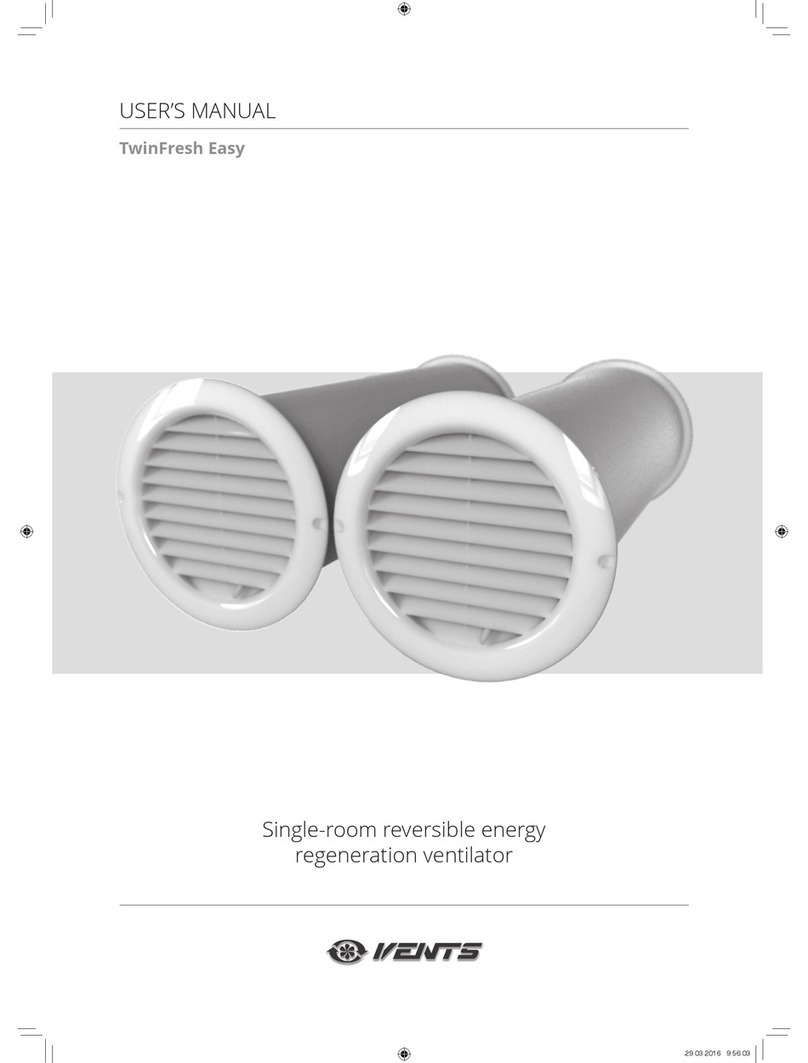
Vents
Vents TwinFresh Easy Series user manual

Vents
Vents VKM 100 Q user manual

Home Decorators Collection
Home Decorators Collection 51890 Use and care guide
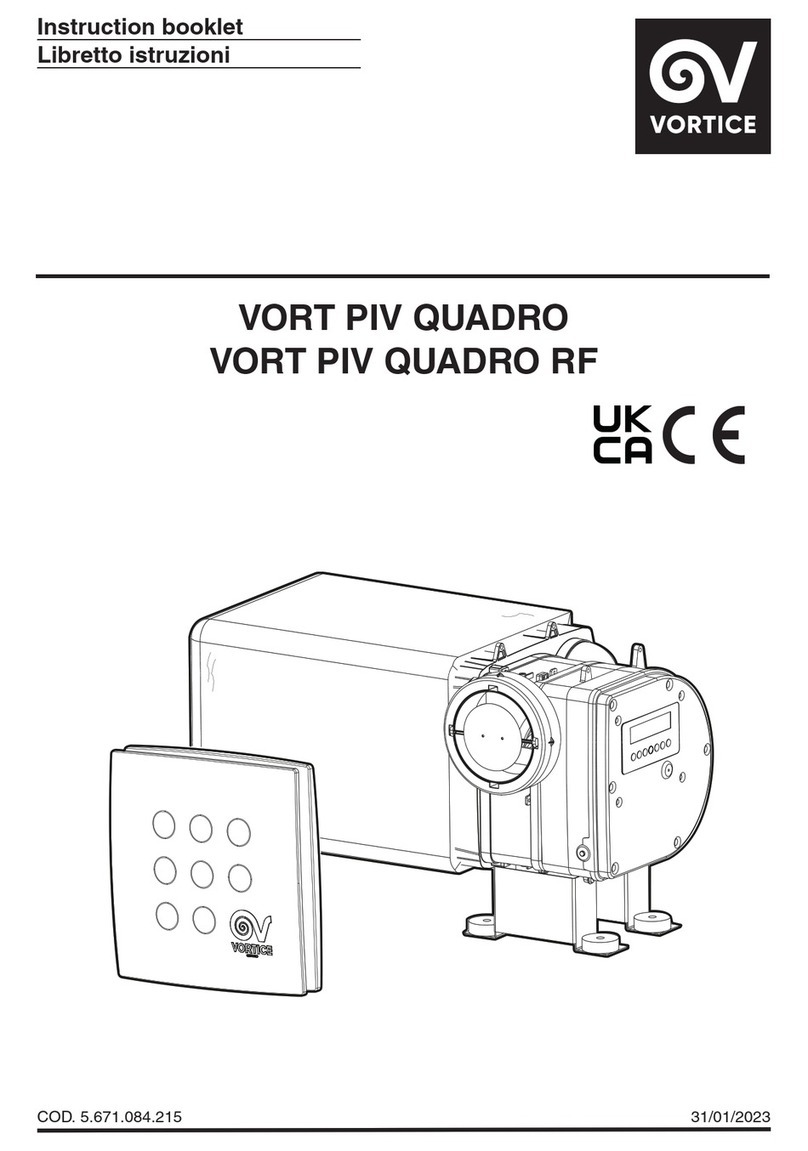
Vortice
Vortice VORT PIV QUADRO Instruction booklet
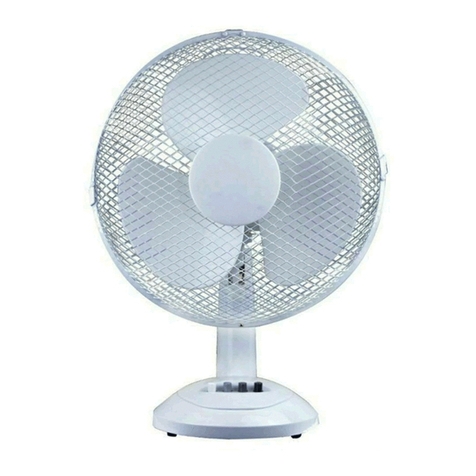
Pro-Elec
Pro-Elec PEL01920 instructions

Mitsubishi Electric
Mitsubishi Electric EF-35UDT2-GL Installation instructions manual

